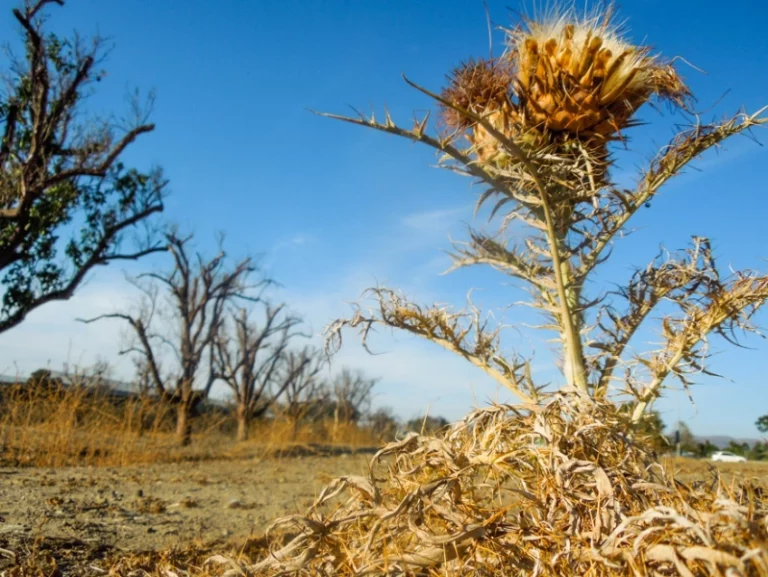Dried plants and parched ground are seen outside Stanford in this 2014 Daily file photo. (Photo: KATHERINE CARR/The Stanford Daily)
Stanford researchers developed a new tool to optimize irrigation systems to help farmers reduce their water usage. Daniel Tartakovsky, professor of energy science and engineering, and Weiyu Li Ph.D. ’23 devised a method for ‘smart’ irrigation by improving estimates of evapotranspiration rates from soil moisture. Evapotranspiration is when water from irrigation evaporates from the plant and soil surface.
As water becomes a more scarce resource, some farmers are turning to water-smart agriculture to minimize water usage and maximize yield. Water-smart agriculture depends on accurate estimation of how much water plants are taking up and how much is lost to the atmosphere. Accurately measuring these rates can inform farmers of the optimal quantity and frequency of watering of their crops, to avoid overuse of water for irrigation.
Previous research in the field of estimating evapotranspiration has been focused on the vertical flow of water during drip irrigation. However, the drawback of this is that it leads to less precise estimation of evapotranspiration rates.
Li’s study aims to factor the non-linear flow of water during drip irrigation, which varies with soil […]
Full article: stanforddaily.com

